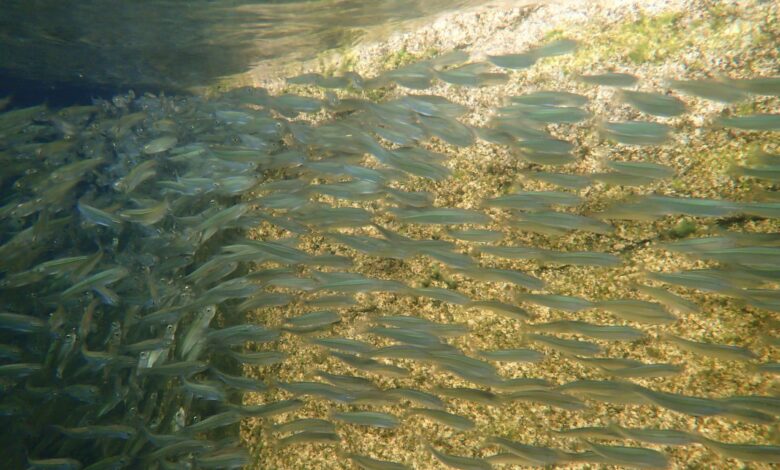
Young alewives schooling along the shore of Long Pond in Maine. Thanks to ongoing restoration efforts, alewife populations grew from near zero in 2010 to 6 million in 2023 on the Penobscot River. Photo Credit: Mark Berry/TNC
Environment USABack to Life: River All Cleaned Up Here
Life has returned to Penobscot River in Maine, the United States, with the removal of hindrances and the multiplying of ancestral fish species, much to the delight of the local indigenous people.
“When these fish get into the smaller streams and there are hundreds of thousands of them, you can’t miss seeing them,” says Dan McCaw, Fisheries Biologist for the Penobscot Nation. “When I first saw them in these numbers, it was a mind-blowing, guttural emotional response.”
Before colonization, the alewife’s population reached tens of millions. By the 1960s, most sea-run fishes like river herring, American eel, and Atlantic salmon had disappeared from Maine’s interior waters. Because of the erection of more than 100 dams – large, small, narrow culverts, and other hindrances – along the Penobscot River and its tributaries, there were near zero alewives in 2010. In 2023, there were 6 million of them. Since 2004, the Penobscot River Restoration Trust – an innovative non-profit partnership including the Penobscot Nation, electric utility producing hydropower PPL-Maine, conservation groups, and state and federal agencies – has been leading the effort. Since 2012, passageways have been restored at 23 sites across the watershed, reconnecting the headwater tributaries to the Penobscot main stem, allowing 12 native species of sea-run fish to travel again. “We’re better now than we have been, but we’ve just turned the corner. We’ve taken the first steps and still have a massive set of challenges ahead of us.”



